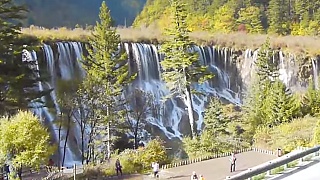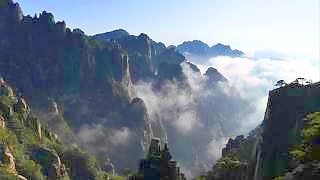With Scenic Relaxation ...
[640],shadow=true,start=,stop=The beautiful natural landscapes of China
Mountains
Himalayas
Location: Southwestern China, bordering Nepal and Bhutan.
Highlights: Home to Mount Everest (Qomolangma), the world's highest peak, and numerous other towering peaks. The region is known for its dramatic landscapes, deep gorges, and rich cultural heritage.
Yellow Mountain (HuangShan)
Location: Anhui Province.
Highlights: Famous for its granite peaks, hot springs, and ancient pine trees. The iconic sea of clouds and picturesque sunrises attract photographers and hikers.
Zhangjiajie
Location: Hunan Province.
Highlights: Known for its towering sandstone pillars, lush forests, and deep ravines. The landscape inspired the floating mountains in the movie "Avatar."
Rivers and Lakes
Yangtze River
Location: Flows from the Tibetan Plateau to the East China Sea.
Highlights: The longest river in Asia, featuring the Three Gorges, which offer stunning cliffs, dense forests, and cultural sites along its banks.
Li River
Location: Guangxi Province.
Highlights: Famous for its karst mountain scenery and crystal-clear waters. A boat cruise from Guilin to Yangshuo is a popular way to enjoy the breathtaking landscapes.
Qinghai Lake
Location: Qinghai Province.
Highlights: The largest saltwater lake in China, surrounded by mountains and grasslands. It's a haven for birdwatchers and nature enthusiasts.
Deserts and Plateaus
Gobi Desert
Location: Northern China and southern Mongolia.
Highlights: Known for its vast, barren landscapes, sand dunes, and unique rock formations. The desert is rich in dinosaur fossils and ancient Silk Road sites.
Tibetan Plateau
Location: Southwestern China.
Highlights: Often referred to as the "Roof of the World," it's the highest and largest plateau in the world. The region features expansive grasslands, glacial lakes, and the sacred Mount Kailash.
Forests and Grasslands
Jiuzhaigou Valley
Location: Sichuan Province.
Highlights: Known for its multi-colored lakes, waterfalls, and snow-capped peaks. The valley is a UNESCO World Heritage Site and a paradise for hikers and nature lovers.
Hulunbuir Grassland
Location: Inner Mongolia.
Highlights: One of the most beautiful and well-preserved grasslands in China, known for its vast, rolling green plains, rivers, and traditional nomadic culture.
Coastal and Island Landscapes
Hainan Island
Location: South China Sea.
Highlights: Known for its tropical climate, sandy beaches, and clear blue waters. The island is a popular destination for beachgoers and water sports enthusiasts.
Zhoushan Archipelago
Location: Zhejiang Province.
Highlights: Comprising over a thousand islands, it offers beautiful beaches, rocky coastlines, and traditional fishing villages.
Caves and Karst Formations
Reed Flute Cave
Location: Guilin, Guangxi Province.
Highlights: A natural limestone cave known for its stunning stalactites, stalagmites, and colorful lighting.
Stone Forest (ShiLin)
Location: Yunnan Province.
Highlights: A UNESCO World Heritage Site, this area features towering limestone pillars that resemble a forest made of stone.
Unique Natural Wonders
Danxia Landform
Location: Several provinces including Gansu, Guangdong, and Hunan.
Highlights: Characterized by red sandstone formations and steep cliffs, the Danxia landscapes are known for their vibrant colors and unique rock shapes.
Rainbow Mountains (Zhangye Danxia National Geological Park)
Location: Gansu Province.
Highlights: Famous for its colorful, layered rock formations that create a stunning "rainbow" effect across the mountains.
Conclusion
China's natural landscapes are incredibly varied and offer a wealth of experiences for travelers. From the towering peaks of the Himalayas to the serene waters of the Li River, and from the vast expanses of the Gobi Desert to the lush valleys of Jiuzhaigou, there is something for everyone to explore and admire. These diverse environments not only showcase the natural beauty of the country but also reflect its rich cultural heritage and deep connection to the land.
 Beautiful China !
Beautiful China !























